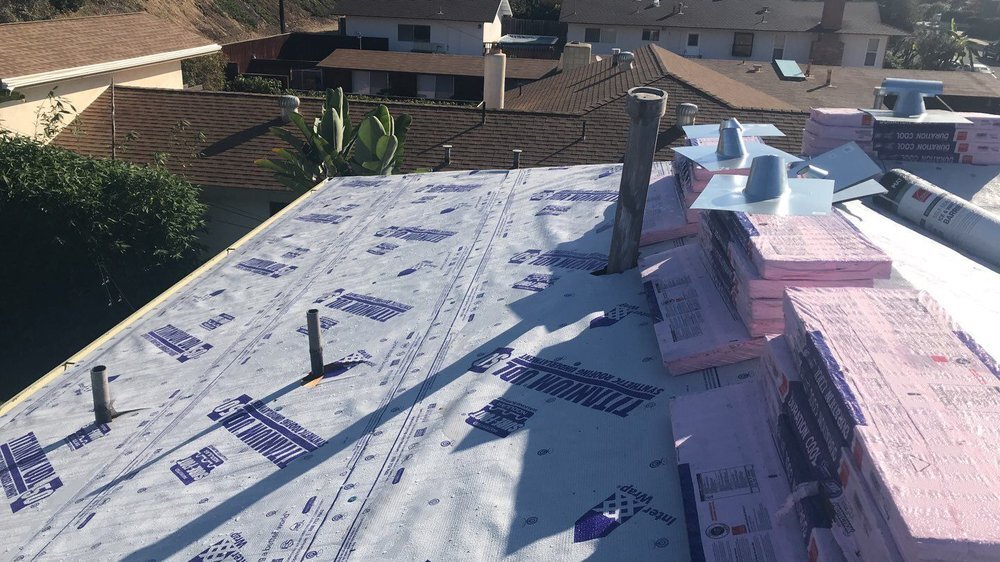Get in touch
Roof Underlayment - Our Difference
WHAT IS UNDERLAYMENT?
Roof Underlayment is the barrier material that is directly underwear your roof. It’s installed directly onto your roof structure and is an added layer of water proof protection. It’s very important in protecting your roof structure from weather.
UNDERLAYMENT DIFFERENCES AND IMPORTANCE
It’s a common topic and you get a lot of our clients who ask us, "What's the difference in your proposal versus others? What's your best practices? What kind of materials do you use?" A lot of roofers will talk about the material manufacturer, so say Owen Corning or GAF or there's plenty of different manufacturers out there, but really the last defense before water gets into your house is the underlayment. So today we'll talk about the underlayment. Typically what we see on a lot of competitors' proposals, they have a 15 pound felt underlayment and that is up to code. It meets most manufacturer's recommended minimums. By the way, I should emphasize minimum.
We send our roofing consultants out with the minimum underlayment, so they can show you the difference. It’s very flexible and can break easily. Basically it’s just felt paper that has tar on it. When the roof is nailed down into the underlayment, the felt grips the nail, but when it’s thin it’s much easier to rip and break.
That's not what we use. What we use is a combination of a synthetic underlayment. It is almost impossible to rip and it’s the main reason we use it, the strength of it is just incredible. When you’re underlayment is the lats protractor from rain and with a approximately 8,000 nails in a roof, you’ll want to make sure that you have an underlayment that can handle movement without ripping. So if you ever see 15 pound felt, even 30 pound felt, it's really not the best. It is less expensive, but it's really not the best long term. It would get the job done, but how long is it going to last? So keep that in mind, as the underlayment oftentimes, in my opinion can be more important than the top layer, the actual roofing shingles themselves.

